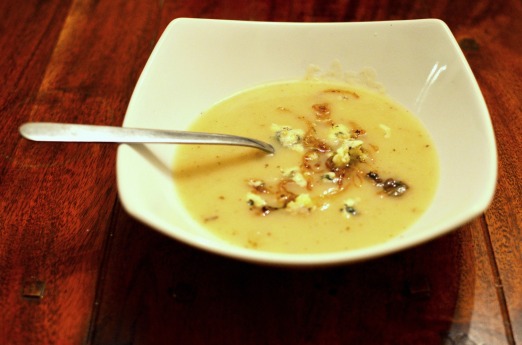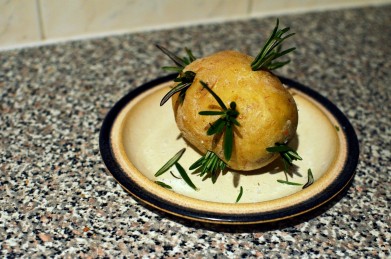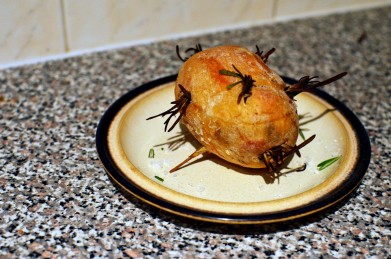I couldn’t decide what kind of bread to make so just made up a basic bread dough while I mulled it over in my mind palace and came up with this bread bad boy. Boom.
Ingredients
400g strong white bread flour
7g instant yeast
7g salt
250ml lukewarm water
1 large red onion
1 garlic clove
small handful of rosemary sprigs
2 tbsp olive oil
2 tbsp balsamic vinegar
1 tsp soft brown sugar
Method
Begin by making the simple bread dough. In a large bowl, weigh out the flour, salt and yeast – remembering to keep the salt and yeast on opposite sides. Mix in half the water with your hands, add the rest in smaller amounts until you get a soft, workable consistency.
Tip out onto a lightly oiled surface and knead for 5-10 minutes until elastic and smooth. Place in a large oiled bowl then place the bowl inside a plastic bag and leave to rise in a warm place for 1-3 hours or until the dough has doubled in size.
Meanwhile, slice the red onion into your preferred shape (I went for small, thin slices) and gently fry in 1 tbsp olive oil, with a crushed garlic clove and finely chopped rosemary for about 5 minutes, until softened. Throw in the balsamic vinegar and sugar and fry for a further minute.
When the bread has proved, tip out onto a lightly oiled surface and gently knead in the onion mixture. You might need a little more bread flour to offset the extra moisture. When the onion is evenly distributed, roughly shape into a rectangle and place in a deep, rectangular tray. Place the tray in a plastic bag and leave to prove once again in a warm place for around an hour.
Brush with about 1 tbsp olive oil before baking at 180-200°C/360-390°F/gas mark 4-6 for around 20-25 minutes until brown and hollow-sounding when tapped.
Enjoy with cheese, chutney or dipped in oil and balsamic vinegar. Scoffscoffscoff.





